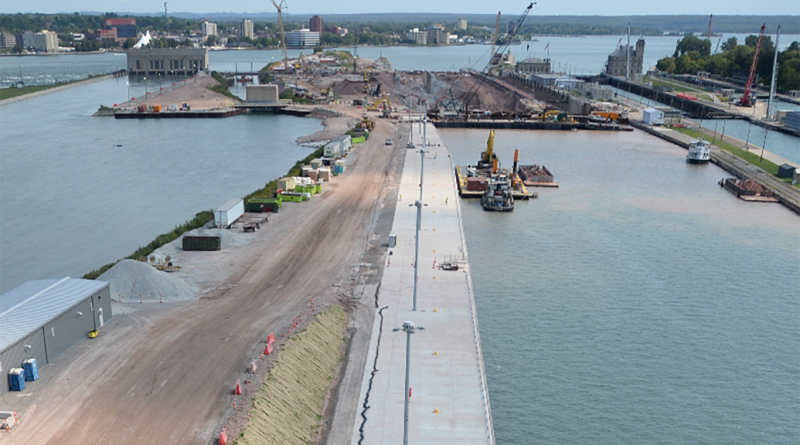Major Milestone Reached by Kokosing-Alberici in $3.2B Soo Lock Modernization
The Soo Lock Project, led by the US Army Corps of Engineers and joint venture Kokosing-Alberici, marks a significant milestone in its mission to modernize one of the most critical shipping routes in North America. Located in Sault Ste. Marie, Michigan, the $3.2 billion project aims to enhance the Great Lakes shipping infrastructure and support the movement of bulk cargo essential to US industries. Phase 2, now substantially complete, is a crucial step toward the final construction, with full completion anticipated by 2030.
How the Soo Lock Project Strengthens Great Lakes Shipping Infrastructure
The Soo Locks, a vital artery for North American shipping, allow vessels to traverse the elevation change between Lake Superior and the lower Great Lakes. Currently, only the Poe Lock, built in 1968, can handle the massive “Laker” vessels that transport critical materials like iron ore and coal. With the lock aging and vulnerable to shutdowns, the US Army Corps of Engineers has undertaken a project to construct a new lock that mirrors the Poe’s size (1,200 feet long, 110 feet wide, and 32 feet deep). This new lock will provide redundancy, ensuring continuous cargo flow even during maintenance.
The project is of immense importance to US manufacturing, with 88% of commodity tonnage passing through the Great Lakes restricted by vessel size to the Poe Lock. A 2015 study by the Department of Homeland Security indicated that a six-month closure of the Poe Lock would result in a $1.1 trillion reduction in US gross domestic product and the loss of 11 million jobs.
What the Completion of Phase 2 Means for the Soo Lock Project
Phase 2 of the project, completed in late 2024, focused on rehabilitating the upstream approach walls. These walls, some over 100 years old, were no longer suited to handle the demands of modern shipping. Kokosing-Alberici, under a $117 million contract awarded in 2020, constructed 52 coffer cells and rebuilt 4,800 feet of walls using 62,000 cubic yards of concrete.
The new upstream approach walls will guide vessels into the lock, allowing for smoother and more efficient docking and passage. The substantial completion of this phase represents a key development in the effort to modernize the Soo Locks. As minor electrical work is finalized, the team is preparing for the final financial close of Phase 2.
The Critical Phase 3 Development
The final stage of the project, Phase 3, began in late 2022 and focuses on constructing the new lock itself. This includes demolishing the existing Sabin Lock, excavating bedrock, and building critical infrastructure such as the lock chamber walls and a pump well substructure. Phase 3 is the most complex part of the project and is expected to be complete by 2030, assuming efficient funding and favorable weather conditions.
Currently, bedrock excavation is underway, and work is progressing on filling the Davis Lock with excavated material. Engineers are also building a new bridge to the power plant, which will provide improved utility access for the lock’s operations.
A $1.1 Trillion Economic Lifeline for the US
The Soo Locks are not just critical for local shipping but are a linchpin in the entire US economy. Should the Poe Lock experience a major failure, the US would face devastating economic consequences. In addition to the potential $1.1 trillion hit to GDP, industries reliant on the steady flow of iron ore and coal would come to a standstill.
The new lock will provide much-needed redundancy, preventing the catastrophic impacts of a single-lock failure and ensuring the resiliency of US manufacturing and military supply chains. By facilitating the uninterrupted movement of raw materials, the Soo Locks ensure that production continues across a wide range of industries.
The completion of Phase 2 in the Soo Lock Project is a pivotal step in securing the future of US shipping through the Great Lakes. As work on Phase 3 continues, the anticipated completion by 2030 will bring significant benefits to the economy and infrastructure, supporting industries and communities that rely on this critical waterway. With Kokosing-Alberici’s work progressing smoothly, the Soo Lock’s modernization promises to bolster US competitiveness in global shipping for decades to come.
Sources:
- ENR
- MarineLink
- DVIDS
- Photo courtesy U.S. Army Corps of Engineers Detroit District
